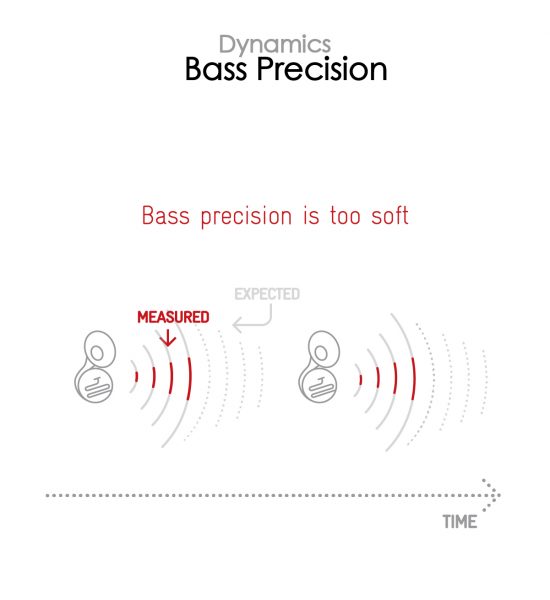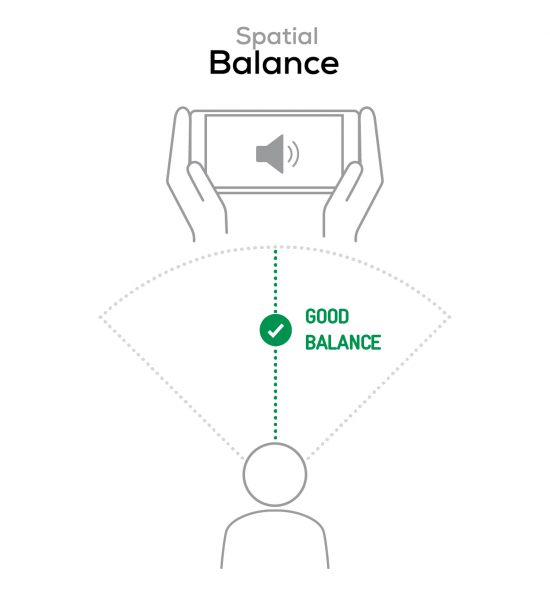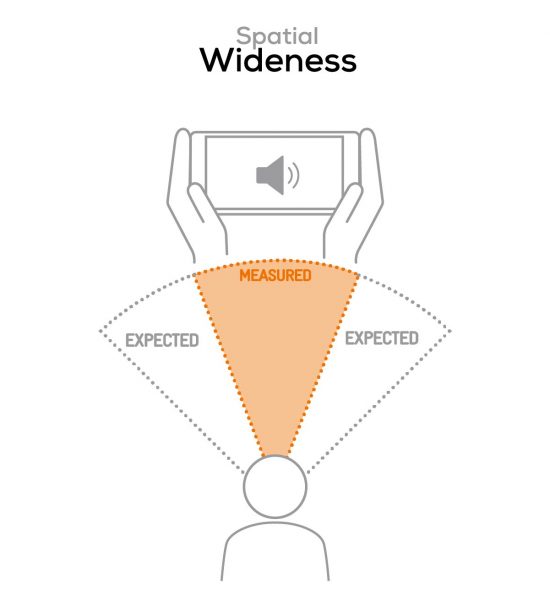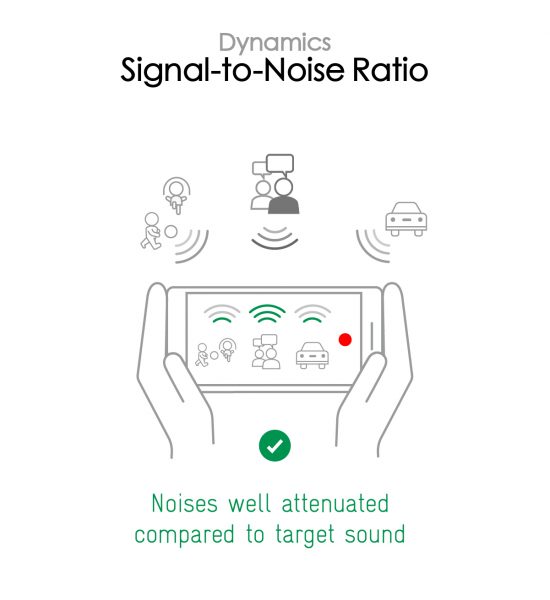We put the Realme GT Neo 3 through our rigorous DXOMARK Audio test suite to measure its performance both at recording sound using its built-in microphones, and at playing audio back through its speakers.
In this review, we will break down how it fared in a variety of tests and several common use cases.
Overview
Key audio specifications include:
- Two speakers: one bottom right side firing; 1 top center front firing
- No Jack audio output
- Dolby Atmos technology
Scoring
Sub-scores and attributes included in the calculations of the global score.

Realme GT Neo 3


 119th
119th 5th
5thPlayback
Cons
- Tonal balance too focused on midrange, resulting in nasal sound
- Poor overall performance
Recording
Pros
- Good recording loudness
- Good stereo wideness, even in portrait orientation
- Excellent signal-to-noise ratio, thanks to drastic processing
The Realme GT Neo 3 achieved a DXOMARK Audio score of 118, with a performance that was overall underwhelming in both playback and recording. Recording performance, in particular, was marred with a multitude of artifacts that were caused by excessive processing.
While playback sound was almost free of artifacts and midrange was rendered decently, there was a pronounced lack of high-end and low-end extension, resulting in a nasal sound and overall poor playback performance.
When using the device to record sound, loudness was good, and a good wideness was rendered, even when holding the phone in portrait orientation while recording. Strong processing achieved an excellent signal-to-noise ratio but also resulted in a number of artifacts, including compression, gating, phasing, and volume jumps. Overall, the device would benefit from a fine-tuning of the processing algorithms. Timbre was also poor and lacked consistency. The tonal balance either sounded muffled or nasal or both. Overall, it’s difficult to recommend the Realme GT Neo 3 to any audio-centric smartphone user.
Test summary
About DXOMARK Audio tests: For scoring and analysis in our smartphone audio reviews, DXOMARK engineers perform a variety of objective tests and undertake more than 20 hours of perceptual evaluation under controlled lab conditions.
(For more details about our Playback protocol, click here; for more details about our Recording protocol, click here.)
The following section gathers key elements of our exhaustive tests and analyses performed in DXOMARK laboratories. Detailed performance evaluations under the form of reports are available upon request. Do not hesitate to contact us.
Playback
Realme GT Neo 3
163
DXOMARK engineers test playback through the smartphone speakers, whose performance is evaluated in our labs and in real-life conditions, using default apps and settings.
The GT Neo 3 did slightly better for playback than for recording, but still leaves quite some room for improvement. Timbre rendition through the internal speakers was quite unbalanced, with a narrow spectrum and clear emphasis on the midrange. Treble was dull and there was a severe lack of high-end extension as well as low-end extension and bass.
In terms of dynamics, the device performed on an average level. Attack rendition was correct, but the lack of bass affected envelope rendition, and punch was weak. The Realme speakers offered average wideness, and while localizability was correct, it was quite hard to pinpoint the location of individual sound sources in the scene. Voices sounded slightly distant, even veiled on some occasions. The minimum volume step was slightly low, making it difficult to properly hear soft content, such as classical music. At the other end of the volume spectrum, the device was loud enough but not on the same level as the best in class.
Overall, few sound artifacts were noticeable, only some distortion and compression at high volume levels. While it was possible to accidentally cover the speakers with your hands while holding the phone normally, speaker occlusion did not impair the listening experience too much.
Listen to the tested smartphone’s playback performance in this comparison with some of its competitors:

Timbre
Realme GT Neo 3
158
The Timbre score represents how well a phone reproduces sound across the audible tonal range and takes into account bass, midrange, treble, tonal balance, and volume dependency. It is the most important attribute for playback.

Dynamics
Realme GT Neo 3
149
The Dynamics score measures the accuracy of changes in the energy level of sound sources, for example how precisely a bass note is reproduced or the impact sound from drums.



Spatial
Realme GT Neo 3
162
The sub-attributes for spatial tests include pinpointing a specific sound's location, its positional balance, distance, and wideness.



Volume
Realme GT Neo 3
162
The Volume score represents the overall loudness of a smartphone and how smoothly volume increases and decreases based on user input.
| Hip-Hop | Classical | |
| Realme GT Neo 3 | 72.6 dBA | 68.7 dBA |
| Realme GT Neo 2 5G | 76.2 dBA | 70.5 dBA |
| OnePlus 9 | 75.9 dBA | 72.3 dBA |

Artifacts
Realme GT Neo 3
157
The Artifacts score measures the extent to which the sound is affected by various types of distortion. The higher the score, the less the disturbances in the sound are noticeable. Distortion can occur because of sound processing in the device and because of the quality of the speakers.


It represents the distortion and noise of the device playing our test signal (0 dB Fs, Sweep Sine in an anechoic box at 40 cm) at the device's maximum volume.
Recording
Realme GT Neo 3
160
DXOMARK engineers test recording by evaluating the recorded files on reference audio equipment. Those recordings are done in our labs and in real-life conditions, using default apps and settings.
If you are planning to use the Realme GT Neo 3 as a recording device, you might want to consider alternatives. Timbre was poor and too focused on the midrange, with recordings sounding muffled and nasal. Treble was faint and receded, and the lack of bass and low-end extension was especially noticeable in recordings at high sound pressure levels, such as concerts.
The Realme delivered an excellent signal-to-noise ratio in all test use cases, but strong compression and strong noise-reduction processing resulted in a very unreliable envelope rendition, with dull attacks and plosives as well as unrealistic sustain. Stereo wideness was pretty good in recordings, but the positions of sound sources in the scene were unstable and hard to locate. On the plus side, recording loudness was overall pretty good.
Some artifacts were noticeable in GT Neo 3 recordings. Both compression and distortion were overall fairly moderate but became more intrusive at high volume levels. Our testers also found it easy to accidentally occlude the microphones with their fingers. Finger noises were quite noticeable in recorded sound as well. Background performance was overall poor, with a muffled sound and resonant sonority.
Here is how the Realme GT Neo 3 performs in recording use cases compared to its competitors:

Timbre
Realme GT Neo 3
147
The Timbre score represents how well a phone captures sounds across the audible tonal range and takes into account bass, midrange, treble, and tonal balance. It is the most important attribute for recording.

Dynamics
Realme GT Neo 3
146
The Dynamics score measures the accuracy of changes in the energy level of sound sources, for example how precisely a voice's plosives (the p's, t's and k's, for example) are reproduced. The score also considers the Signal-to-Noise Ratio (SNR), for example how loud the main voice is compared to the background noise.



Spatial
Realme GT Neo 3
159
The sub-attributes for spatial tests include pinpointing a specific sound's location, its positional balance, distance, and wideness on the recorded audio files.



Volume
Realme GT Neo 3
170
The Volume score represents how loud audio is normalized on the recorded files and the how the device handles loud environments, such as electronic concerts, when recording.
| Meeting | Life Video | Selfie Video | Memo | |
| Realme GT Neo 3 | -21.3 LUFS | -20.2 LUFS | -18.3 LUFS | -18.4 LUFS |
| Realme GT Neo 2 5G | -25.2 LUFS | -22.9 LUFS | -21.8 LUFS | -22.2 LUFS |
| OnePlus 9 | -29.5 LUFS | -20.6 LUFS | -19.4 LUFS | -19.4 LUFS |

Artifacts
Realme GT Neo 3
145
The Artifacts score measures the extent to which the recorded sounds are affected by various types of distortions. The higher the score, the less the disturbances in the sound are noticeable. Distortions can occur because of sound processing in the device and the quality of the microphones, as well as user handling, such as how the phone is held.


In this audio comparison, you can listen to the way this smartphone handles wind noise relative to its competitors:

Background
Realme GT Neo 3
166
Background evaluates how natural the various sounds around a voice blend into the video recording file. For example, when recording a speech at an event, the background should not interfere with the main voice, yet it should provide some context of the surroundings.





DXOMARK encourages its readers to share comments on the articles. To read or post comments, Disqus cookies are required. Change your Cookies Preferences and read more about our Comment Policy.